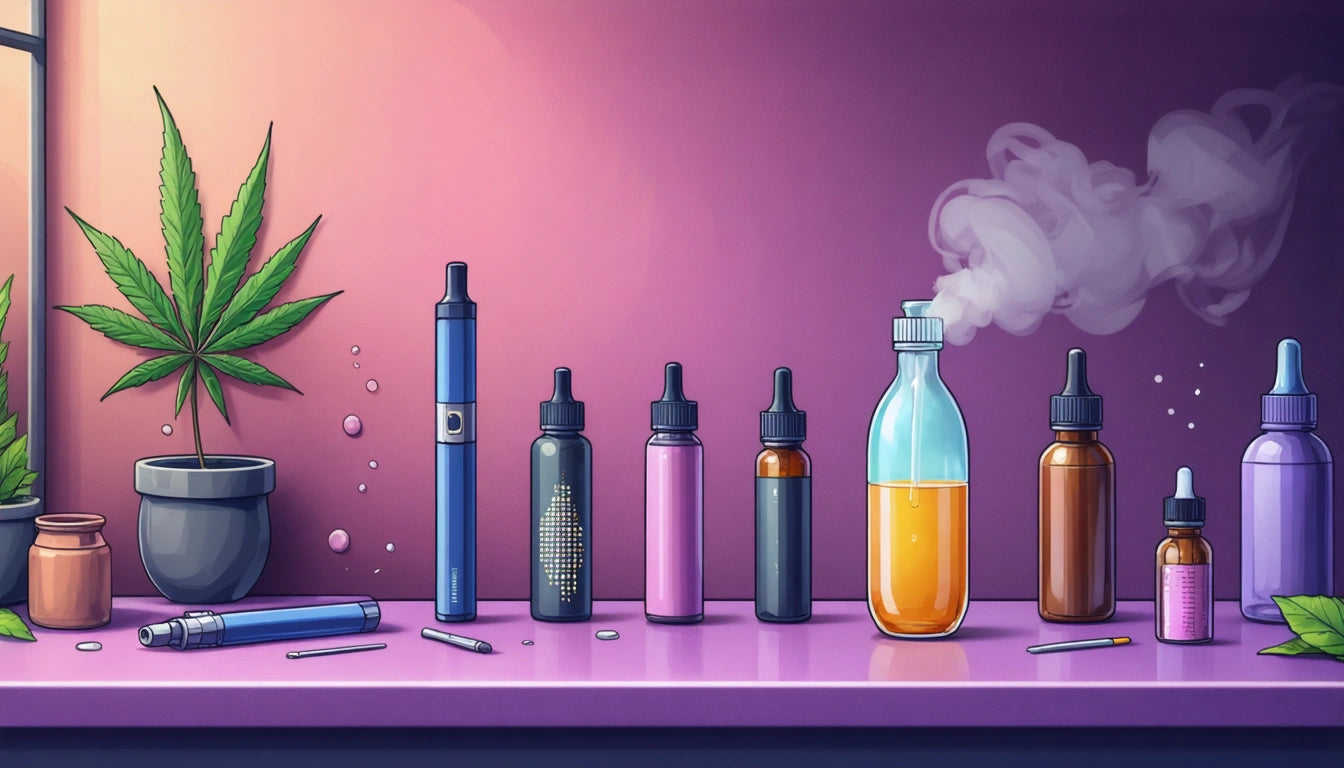Table of Contents
The Best RH Levels for Long-Term Cannabis Storage
Proper relative humidity (RH) control is essential for maintaining cannabis quality during long-term storage. Whether you're a cultivator, processor, retailer, or consumer, understanding the optimal RH levels can significantly impact potency, flavor, and overall product integrity. This guide explores the science behind cannabis storage and provides practical recommendations for preserving your products.
Understanding RH and Its Impact on Cannabis
Relative humidity measures the amount of moisture in the air compared to what the air can hold at a given temperature. For cannabis, RH directly affects moisture content, which influences several critical factors:
- Terpene preservation and aroma intensity
- Cannabinoid stability and potency retention
- Mold and bacteria resistance
- Texture and smoking/vaping experience
When cannabis is stored at improper humidity levels, it can quickly degrade. Too dry, and trichomes become brittle and break off, terpenes evaporate, and the flower crumbles. Too humid, and mold growth becomes a serious risk, potentially rendering products unusable and unsafe.
Optimal RH Levels for Different Cannabis Products
Flower Storage (58-62% RH)
For most cannabis flower, experts recommend maintaining 58-62% RH for long-term storage. This range strikes the perfect balance between moisture retention and mold prevention. As detailed in this terpene shield explanation, this range helps preserve the aromatic compounds that give each strain its unique character.
For particularly resinous strains, staying closer to 58% may be preferable, while drier varieties might benefit from the higher end of the range. Comparing RH requirements for different strains can help fine-tune your approach.
Concentrates (55-62% RH)
Concentrates generally require slightly lower humidity levels than flower. Most experts recommend 55-62% RH, depending on the specific type:
- Live resins and rosins: 58-62% RH
- Shatter and wax: 55-58% RH
- Hash and kief: 55-60% RH
The goal is to prevent both moisture loss and oxidation while maintaining the concentrate's intended consistency.
Humidity Control Solutions for Cannabis Storage
Several products can help maintain ideal RH levels for cannabis storage:
Humidity Control Packs
Two-way humidity control packs are the industry standard for cannabis storage. These products work by either releasing or absorbing moisture to maintain a specific RH level. This comparison of Integra vs. Boveda highlights the differences between leading brands.
For higher humidity environments, the 69-72% RH packs might be suitable for specific use cases, though they're generally not recommended for long-term cannabis storage due to mold risks.
Humidity Indicators
Knowing when to replace humidity packs is crucial for consistent storage conditions. Replacement indicator cards provide visual cues when humidity control is compromised and packs need replacement.
Climate Considerations for Storage Environments
Your local climate significantly impacts cannabis storage strategies:
High Humidity Regions
In naturally humid environments, additional precautions are necessary. Avoiding mold in high humidity climates requires consistent monitoring and potentially using humidity control packs with lower RH targets (58% rather than 62%).
Arid Environments
Conversely, extremely dry climates present the opposite challenge. Preventing over-drying in arid regions often requires more frequent humidity pack replacements and airtight storage containers.
Measuring and Monitoring RH Levels
Accurate measurement is essential for proper humidity control. While humidity packs maintain a general range, precise monitoring requires specialized tools.
Digital hygrometers provide real-time humidity readings and can be placed directly in storage containers. For commercial operations handling multiple strains or products, precision measurement tools like digital scales help ensure consistent moisture content across batches when combined with humidity monitoring.
Regular monitoring allows for immediate intervention if conditions drift from optimal ranges, preventing potential product degradation or loss.
Storage Best Practices for Maximum Preservation
Beyond humidity control, several other factors contribute to effective long-term cannabis storage:
- Container selection: Airtight glass containers are ideal for flower storage, while silicone or glass containers work well for concentrates.
- Temperature control: Store cannabis between 60-70 °F (15-21 °C) to prevent terpene degradation and maintain potency.
- Light protection: UV light degrades cannabinoids rapidly. Use opaque or amber containers and store in dark locations.
- Air exposure: Minimize opening containers to reduce oxygen exposure, which accelerates degradation.
- Humidity pack placement: As outlined in packaging workflows for humidity packs, proper placement ensures even humidity distribution.
For commercial operations, implementing these practices at scale requires careful planning and potentially specialized humidity and moisture control solutions designed for bulk storage.
Future of Cannabis Preservation Technology
The cannabis industry continues to innovate in preservation technology. Emerging solutions include terpene-infused humidity packs that not only maintain moisture but potentially enhance aromatic profiles. As discussed in this article on terpene-infused packs, these products represent the next frontier in cannabis preservation.
Additionally, smart storage containers with built-in humidity and temperature monitoring are becoming more accessible, allowing for precise environmental control without constant manual checking. As regulations evolve and consumer expectations for quality increase, these technological advances will likely become standard practice for serious cannabis businesses and enthusiasts alike.











Leave a comment
All comments are moderated before being published.
This site is protected by hCaptcha and the hCaptcha Privacy Policy and Terms of Service apply.